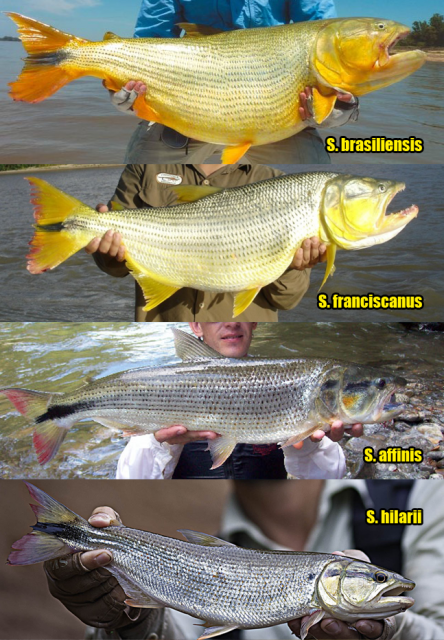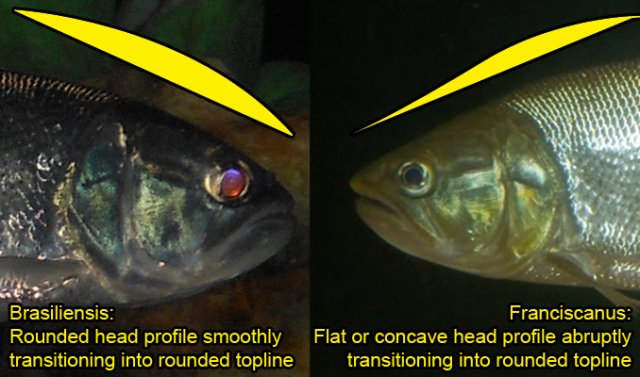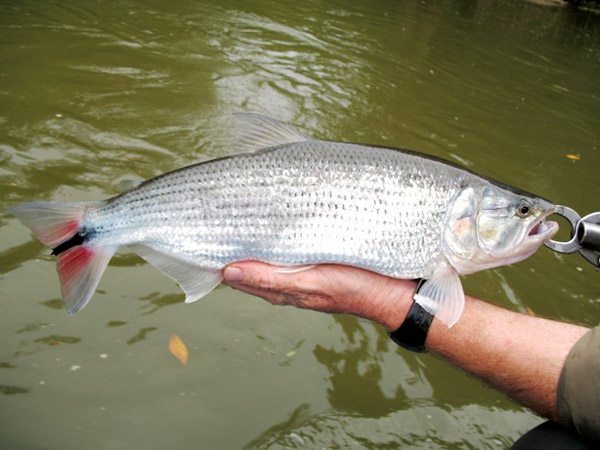Table of Contents, Introduction & Acknowledgements
1.1 update- minor format changes to improve readability after the migration, clarification of data in the guide and a new 'key to species' picture.
Table of Contents
Introduction
Acknowledgements
1.1 update- minor format changes to improve readability after the migration, clarification of data in the guide and a new 'key to species' picture.
Table of Contents
NOTE: Click on the hyperlinks to go to that content.
Introduction & Acknowledgements
General Care
Key to Species
Salminus franciscanus
Salminus brasiliensis
Salminus affinis
Salminus hilarii
References
General Care
Key to Species
Salminus franciscanus
Salminus brasiliensis
Salminus affinis
Salminus hilarii
References
Introduction
Hello all.
Here we go again! This is a subject that has been discussed ad nauseum on the internet with very little successful proper identification. There has been thread after thread of folks wondering why our dorados don't turn yellow, why their displayed head morphology varies so widely, etc, etc etc. These are fish that have have until recently confounded even scientists.
As we explored in a recent thread, this issue was clarified in 2007 when Lima and Britski addressed the issue and found that there are in fact two species of what we call golden dorados. With this revelation, that is only now finding its way into the hobby, the issue of the varied morphology of the golden dorados is clarified; there are two species of golden dorado and you're correct to say you have a golden dorado if you have either a Salminus brasiliensis or a Salminus franciscanus.
Here we go again! This is a subject that has been discussed ad nauseum on the internet with very little successful proper identification. There has been thread after thread of folks wondering why our dorados don't turn yellow, why their displayed head morphology varies so widely, etc, etc etc. These are fish that have have until recently confounded even scientists.
As we explored in a recent thread, this issue was clarified in 2007 when Lima and Britski addressed the issue and found that there are in fact two species of what we call golden dorados. With this revelation, that is only now finding its way into the hobby, the issue of the varied morphology of the golden dorados is clarified; there are two species of golden dorado and you're correct to say you have a golden dorado if you have either a Salminus brasiliensis or a Salminus franciscanus.
Acknowledgements
I would like to thank everyone who contributed images or information to this project via the ID sticky preparation thread. Your contributions have proven to be quite useful in the preparation of this thread.
I would like to specifically thank the following members-
DB Junkie, for sharing his wealth of knowledge on these fish. He's one of the few members who has managed to keep these fish in a group and a community without a lot of other dead fish.
djaalix, who also successfully managed to house his dorado with other fish. Also contributed several great pictures.
And finally a man who has played an immense role in bringing rare fish into the hobby, Mr. Rare Fish himself, fugupuff. Wes, thank you for everything you've done over the years to help the hobby.
I would like to specifically thank the following members-
DB Junkie, for sharing his wealth of knowledge on these fish. He's one of the few members who has managed to keep these fish in a group and a community without a lot of other dead fish.
djaalix, who also successfully managed to house his dorado with other fish. Also contributed several great pictures.
And finally a man who has played an immense role in bringing rare fish into the hobby, Mr. Rare Fish himself, fugupuff. Wes, thank you for everything you've done over the years to help the hobby.















